Review and photos by Bokisaurus
Part 2 of Kaiyodo Dinoland Natural History review series
A long time ago, I traveled back in time. Well, not exactly, more like a road trip through time to some of the most scenic and fossil rich place in the America west.
In this trip I visited the Dinosaur National Monument in Colorado and Utah. Before we reached the monument, we stopped by a tall eroding cliff. I got out and stood at the base of this magnificent cliff, marveling at the distinctive layers of time, like books stacked on top of each other, each with its own history and stories to tell.
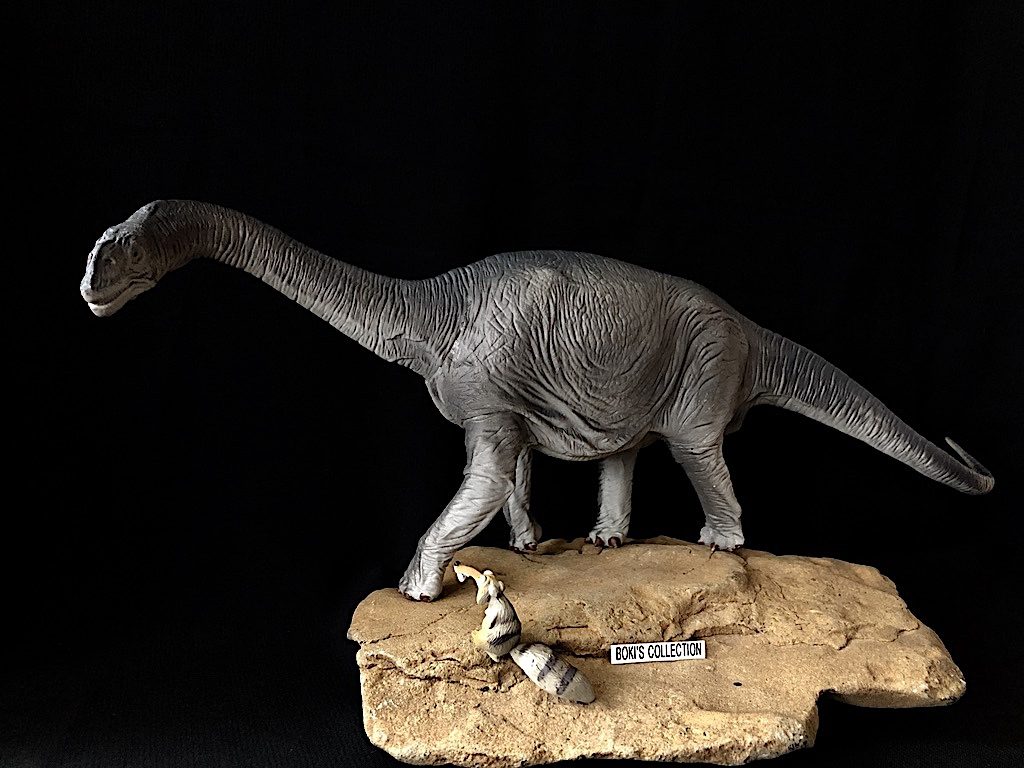
I saw my very first dinosaur fossil in person during this trip, one of them is Camarasaurus. I was mesmerized by the beauty of each of the fossil, including some in-situ on a cliff side where at that time, work is still being done to uncover some fossils still entombed in the rocks. One of the most visible fossil in this layer is that of a Camarasaurus skull. As you can imagine, it was hard leaving the place. Of all the dinosaur fossil I saw in this trip, Camarasaurus stood out and I developed a soft spot for this magnificent animal.
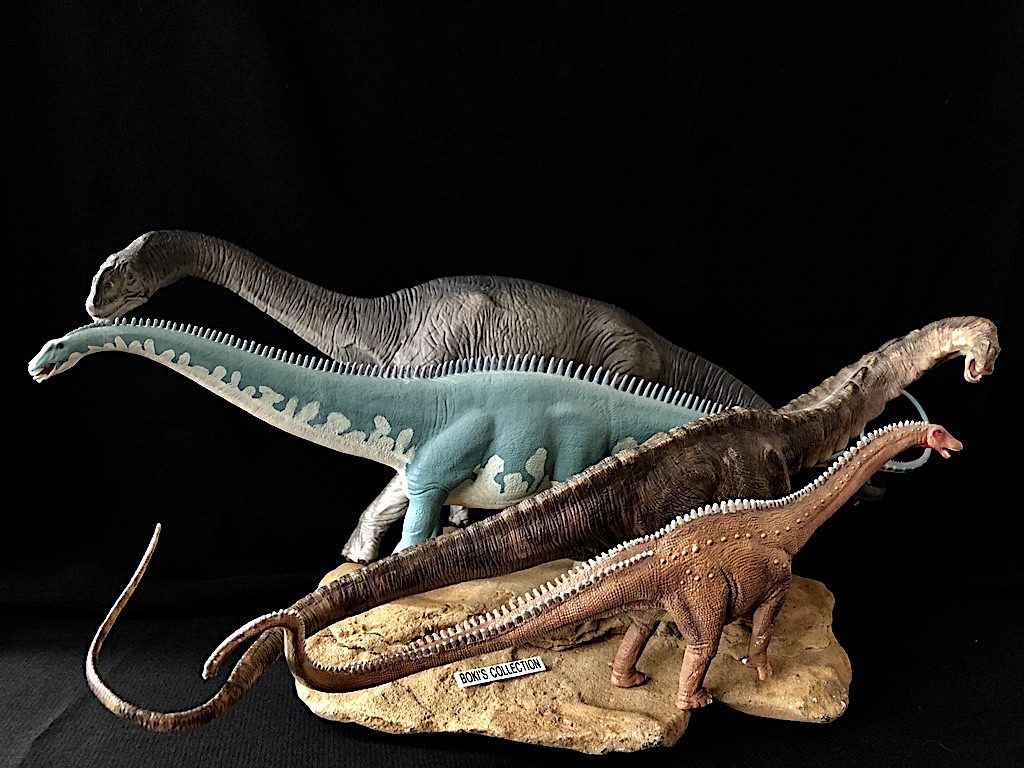
Camarasaurus lived in the Jurassic of what would one day be North America and was part of a rich and diverse fauna community.
Today, this area is known as the Morrison Formation, one of the worlds riches and most famous fossil site. Its breathtaking desert landscape is a sight to behold and millions of tourist flock to this area every year to soak in the sight, but also to see the fossils.
Towering colorful cliffs of multi-hues span for miles as far as the eyes can see.
But back in the Jurassic, it was a lush environment that was full of giants.
Here, some of the most iconic dinosaurs we know today once roamed.
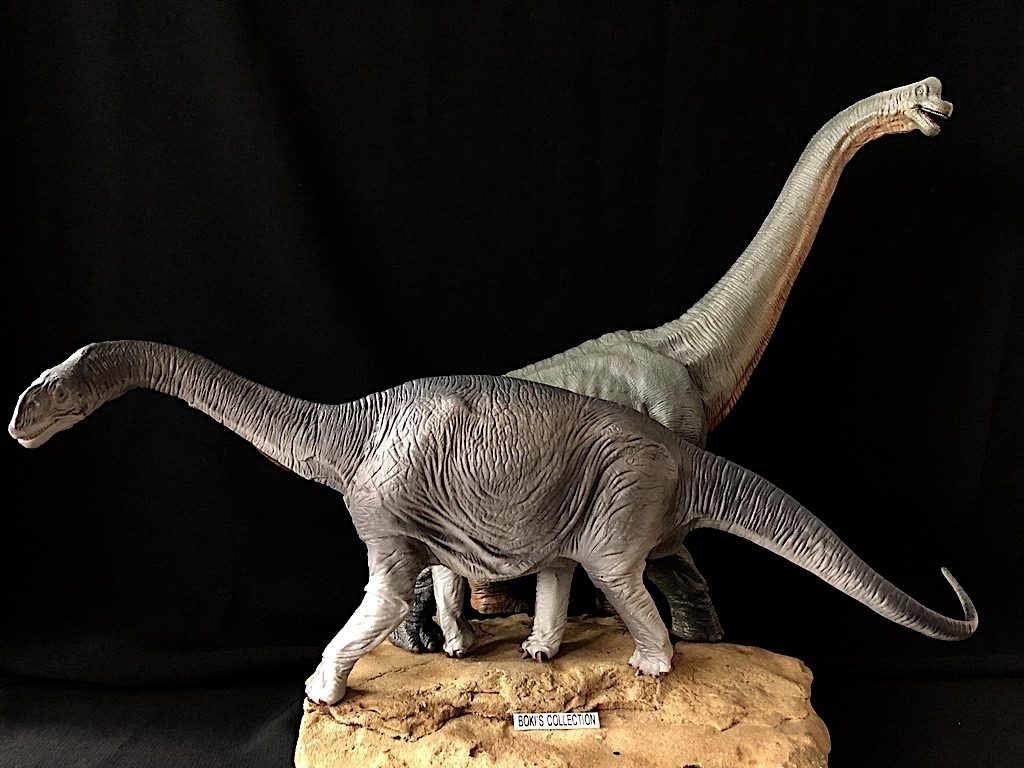
Today, we will take a look at the large Camarasaurus figure from Kaiyodo. This figure is part of their large, hollow figures from the Dinoland Natural History series. As I mentioned in my Chasmosaurus review, these set of figures were released way back in the mid 1980’s and early 90’s. So we need to keep in mind the age of these figure as we take a closer look.
Camarasaurus, meaning “Chambered lizard”, referring to the hollow chambers in its vertebrae, was one of the most well preserved and common dinosaur fossil found in the Morrison Formation. It is also the most common sauropod fossil in the formation, with exquisite preservation including the skull, a rarity among sauropods.

It is a large animal, with size estimate from 49 feet long and weighing in at 51 tons for the largest species. The Jurassic is often called the time of the giants due to the abundance of different large sauropod species, as well as other herbivores such as the iconic Stegosaurus.
Camarasaurus shared the lush landscape with other household name sauropods such as the gigantic Brachiosaurus, Brontosaurus, Diplodocus, Apatosaurus, as well as the less popular Barosaurus. Each of these giants occupy a different niche, avoiding direct completion with each other, as they lived side-by-side.
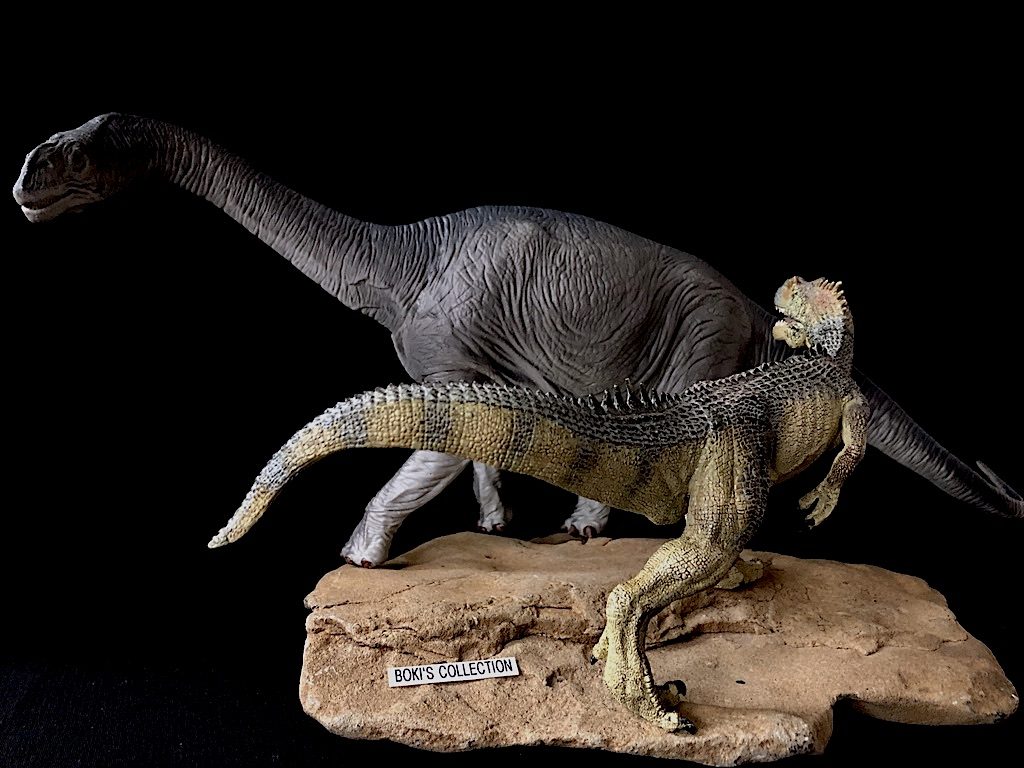
As expected, where there is abundant herbivores, large predators are not that far away. Sure enough, there are many that prowled the land including, once again, some of the most famous theropods we know such as Ceratosaurus, Saurophaganax, Torvosaurus, and of course the perennial favorite Allosaurus.
These large predators have the potential to prey on the young, sick, old, and injured Camarasaurus given a chance, and some of them grew large enough to do so.
For a sauropod with complete fossil representation, being the most common, as well as having a good sampling of various growth stages, you would think that it would a a great choice for toy companies that produce dinosaur figures to make.
Far from it. Despite all of these qualities, Camarasaurus figures are actually rare in the toy figure world.

Safari released one in their old Carnegie line, and it was the only large readily available figure of the species for a long time until a remake was released this year. Of course there are the miniature figures from kaiyodo’s Dinotales series as well.
There was also a knock-off figure produced by Waiphoon, that was much smaller in size, but clearly based on this sculpt and figure. It was once common a few years ago, but not sure if it is still in circulation these days.
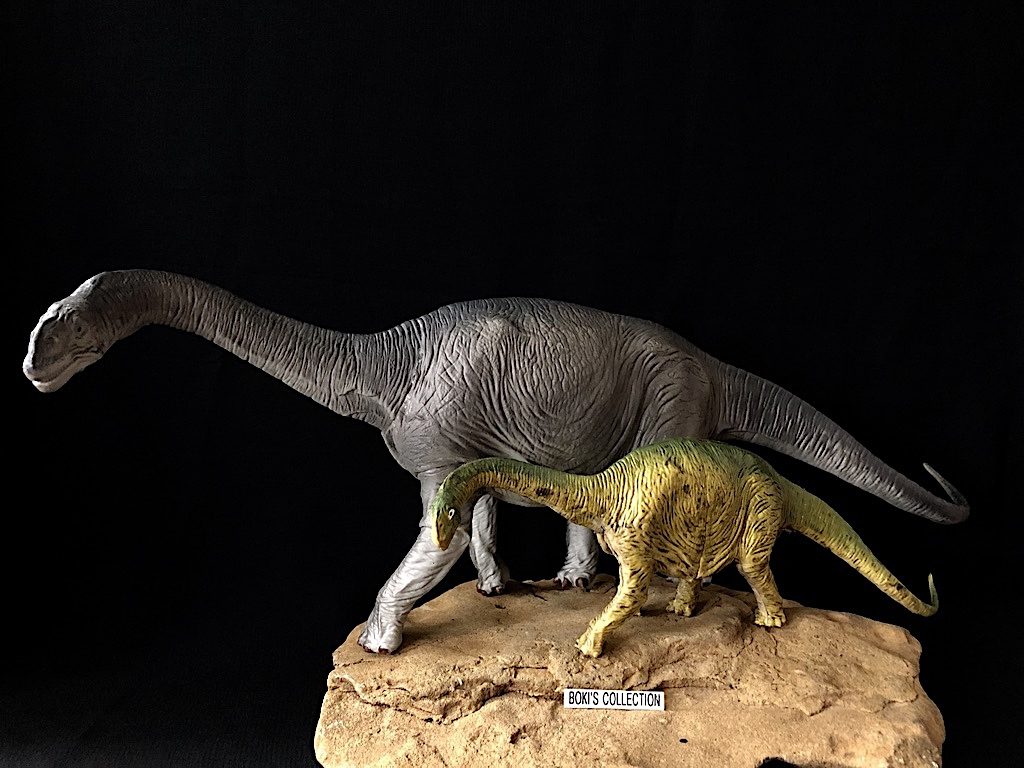
Unlike other sauropods, Camarasaurus have a head that is squarish in shape, boxier, and its snout is blunt unlike the the long and narrow one we see in Diplodocus.
The figure capture these trait and is sculpted nicely. There are plenty of skin wrinkles on the face. The tall ridge is clearly visible. The fleshy nostrils are placed midway up the skull, perhaps a little too far up where it should be.
The figure is sculpted by Kazunari Araki, so as expected there are shrink-wrapping going on in the head sculpt as well as parts of the body. The eyes are small and colored black. The tiny eyes are encircled by rings of skin fold and wrinkles.
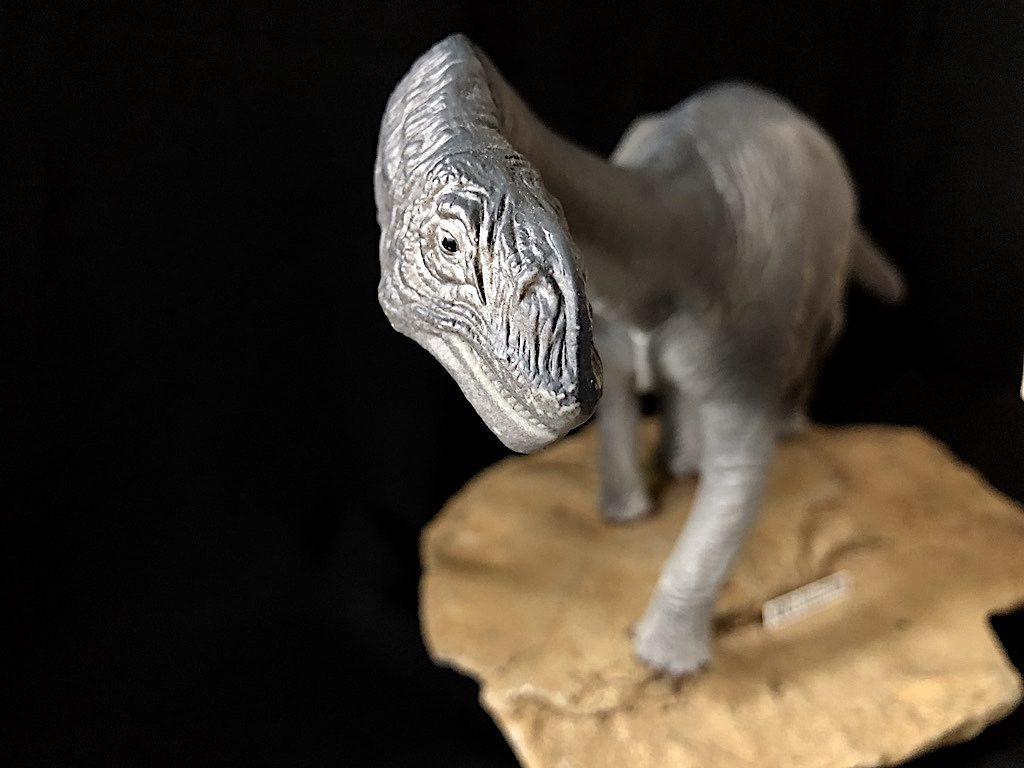
The teeth is clearly visible, but unfortunately painted the same as the skin so its hard to tell. They are nicely sculpted and there is even a hint of lips!
The mouth is slightly open, curiously, the side have big skin fold, so this gives the figure an almost grinning appearance.
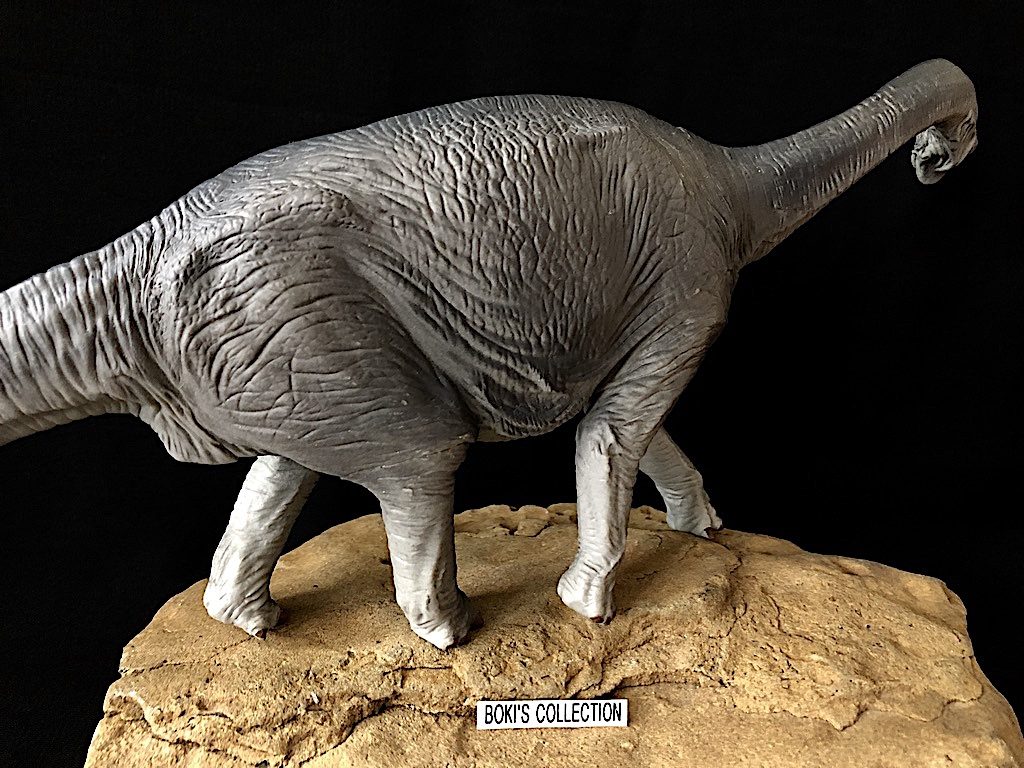
This figure is part of the 1:20 scale collection so it is of a good size. The figure measures 17” inches ( 20” inches if stretched out) from nose to tail tip and stands 6” inches tall at the shoulders.
Often sauropods are, especially in the early years, given the elephant skin treatment. This is very true of this figure. If you block off parts of the figure and just look at a patch of skin, you will think it belongs to an elephant.
The figure have so many skin fold and deep wrinkles that it almost looks too much. In addition, there are smaller sized skin folds that almost looks like scales.
There are plenty of loose skin on the belly, base of the t ail, and legs. It’s hard to tell if this animal is malnourished or just have a bad case of loose skin.
But despite these extremes, the overall look and effect is rather nice.
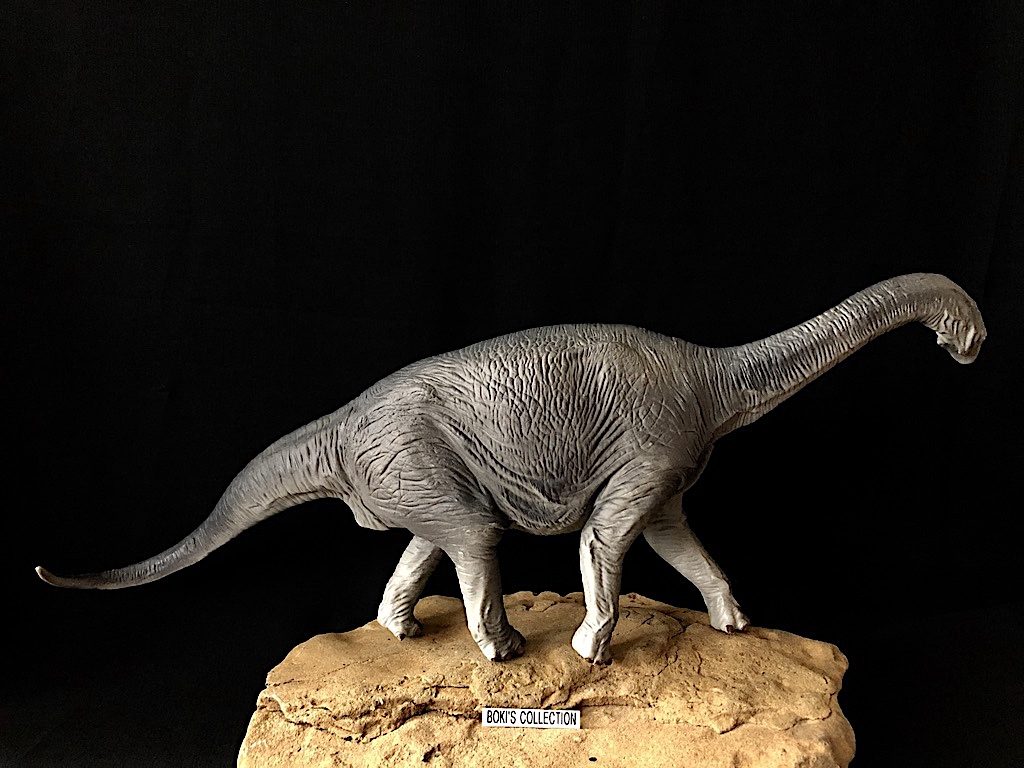
Camarasaurus in appearance looks like a cross between Brachiosaurus and Diplodocus, two more famous sauropods it shared the environment with. It has a shorter neck that is held more vertical like a Brachiosaurus. It also have a slightly sloped back when viewed in profile.
In the past, Camarasaurus was often shown to be much smaller than they really are. This is because when a complete skeleton was described in 1925, the skeleton belonged to a juvenile and not a fully grown animal. There are four species of Camarasaurus currently recognized; C. supremus ( type specimen that was discovered by Cope), C. grandis, C. lentus, and C. lewisi.
Not all of these species existed at the same time, although C. lentus and C. grandis did for several million years.
The figure was not given a specific species, so it could be any of these.
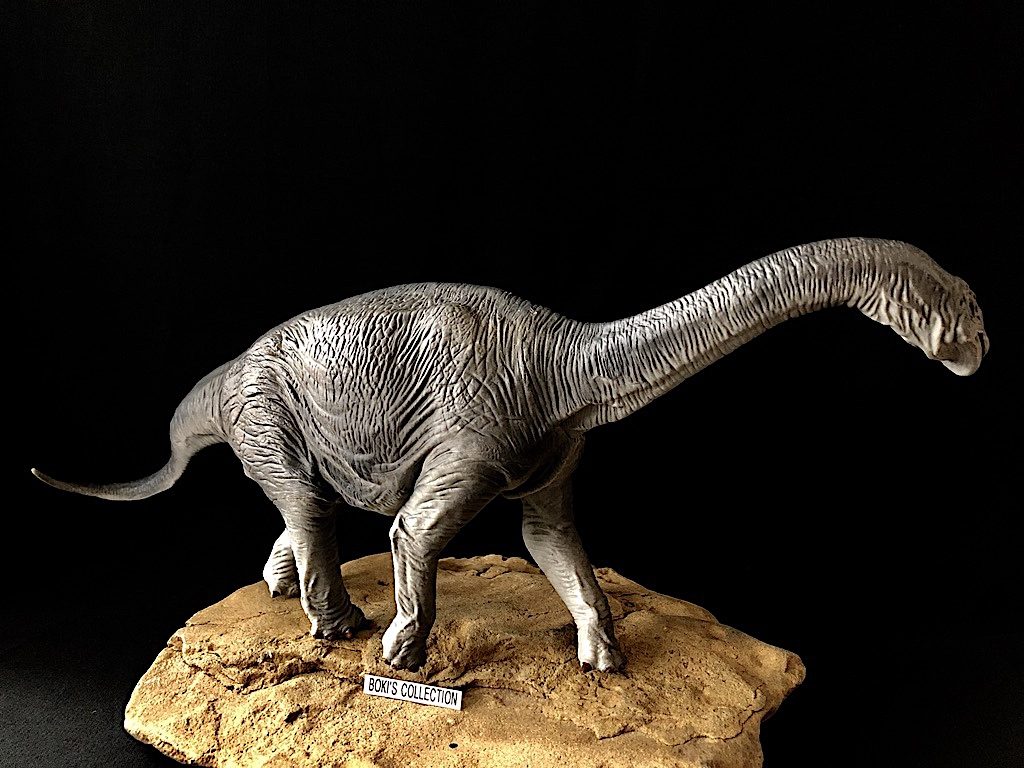
There is evidence that Camarasaurus may have traveled in herd or at least in small groups. It is doubtful that they cared for their young as eggs found that are believed to be that of Camarasaurus were arranged in lines, similar to other sauropods that did not tend for their young.
The figure has a long tail that curves sharply to the left at the midpoint. The neck is posed straight on with the head slightly tilted to the right as if the animal is glancing back.
The pose is relaxed but how some movement. The legs are positioned as if the animal is caught mid-stride with the left back leg out while the right on forward. The front left is out forward in the stepping motion, while the right is pulled back in a pushing motion.
The legs all look powerful and muscular with lots of skin folds, there are even what looks like veins popping out. This really shows the weight of the animal.
Unfortunately, as is common on many sauropod figure especially from earlier decades, the feet is given the elephant treatment again.
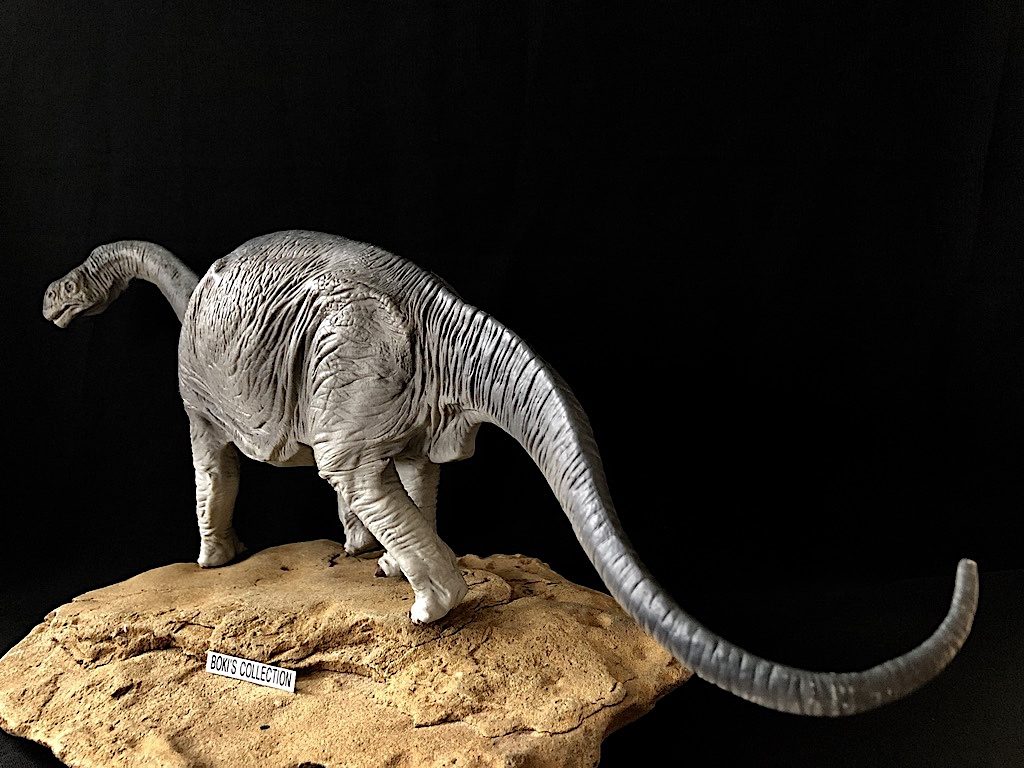
Then the front toenails are all sculpted and painted, the largest inner claw can also be a little bigger. The feet also is missing that distinctive crescent shape that we see in sauropod feet. But hey, it still is a nice model.
Like all the Kaiyodo Dinoland large figure, this one was also offered as a kit that needs assembling as well as a pre-made version. This one is the pre-made, I simple don’t have skills for kits.
Yo can see the seams where various parts connects. Unfortunately, not all of them are nicely connected, some are very visible. There are seven parts total; the neck/head, body, all 4 legs, and tail
The color given is another example of elephant-inspired with mostly just gray tones, with slightly darker tone on the top, and lighter on the belly.
As far as I know, this Camarasaurus is one of four sauropods from the series. with the truly gigantic Brachiosaurs, the exquisite Saltasaurus, the amusingly retro looking Apatosaurus/Brontosaurus rounding it. There may also be a fifth, an Amargasaurus, but I am not sure if it was part of the series or not.

Before I conclude the review, I would like to mention a special book that have inspired me a lot. In the mid 1990, I worked as a department manager for Barnes & Noble bookstore. I happen to oversee the science, art, and bargain department.
One day, I noticed a new book with a dinosaur in front of a lighthouse in its cover.
The book was Dinopix by Teruhisa Tajima, a Japanese designer and photographer. I got the book and I was blown away by the images of dinosaur in today’s landscape!
This was before I started collecting dinosaur figures so I was not really paying attention to the dinosaur figures in the photos, I just assumed they were models made specifically for the book.
The images are lush, a combination of natural and manmade landscape with dinosaurs photoshopped into them.
The cover of the book shows a Camarasaurus that looks like it is glancing down on a parked car in front of it.
It would be many years later, when I joined the forum that I would realize that the dinosaur shown in that book are actually figures made by Kaiyodo!
This Camarasaurus is the figure chosen for the the cover, and its a beautiful photo that, to this day, still is one of my favorite from the book.
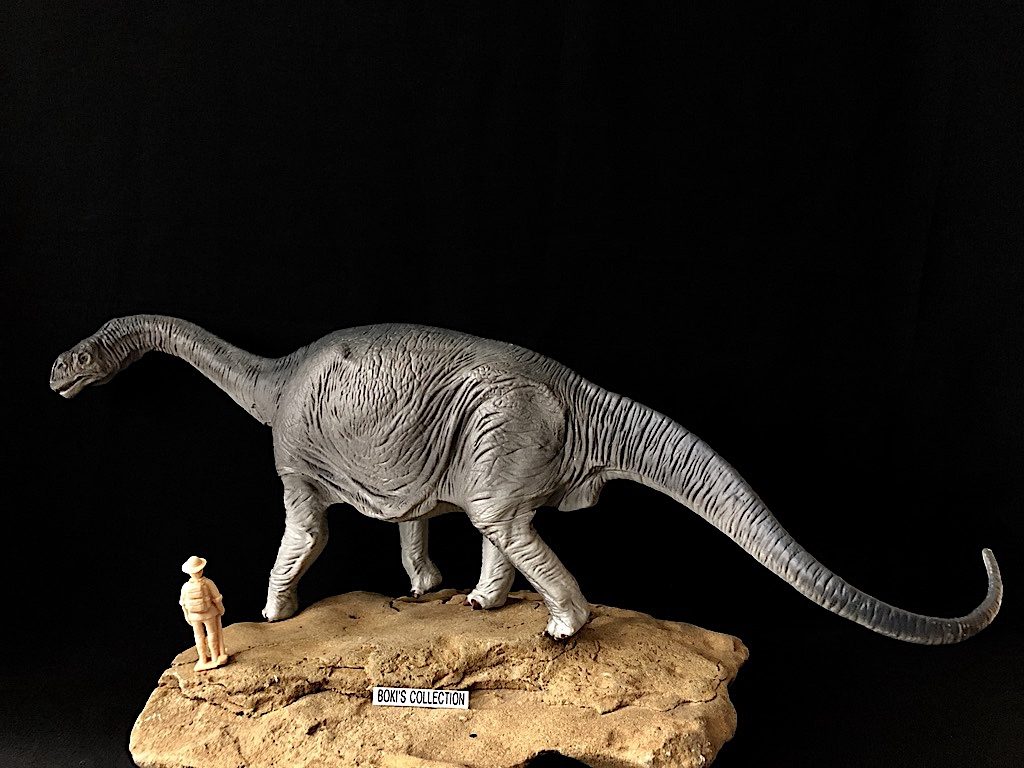
The book is long out of print, but if you happen to find it in a second hand bookstore, I highly recommend it. The majority of the Kaiyodo large Dinoland Natural History figures makes an appearance in the book.
With the shortage of large Camarasaurus figures out there, this figure is definitely worth acquiring if you can find it at an affordable cost.
Like many from the series, they are rare and often command high price. Despite its age, this is by far my favorite Camarasaurus figure. There is just a nice look to it that I find really appealing despite some of it inaccuracies ( which to me are minor).

It may not be the most colorful of the bunch, but its subdued coloration works for such a big animal.
I hope that toy companies will consider giving Camarasaurus the attention it surely deserves, and that we may see more figure of it in the future.
Well, that concludes todays review. I hope you enjoyed it, and thank you for reading. Until we meet again on the next review, take care and cheers!
Disclaimer: links to Ebay and Amazon on the DinoToyBlog are affiliate links, so we make a small commission if you use them. Thanks for supporting us!




Good review. I look forward to the next instalment!